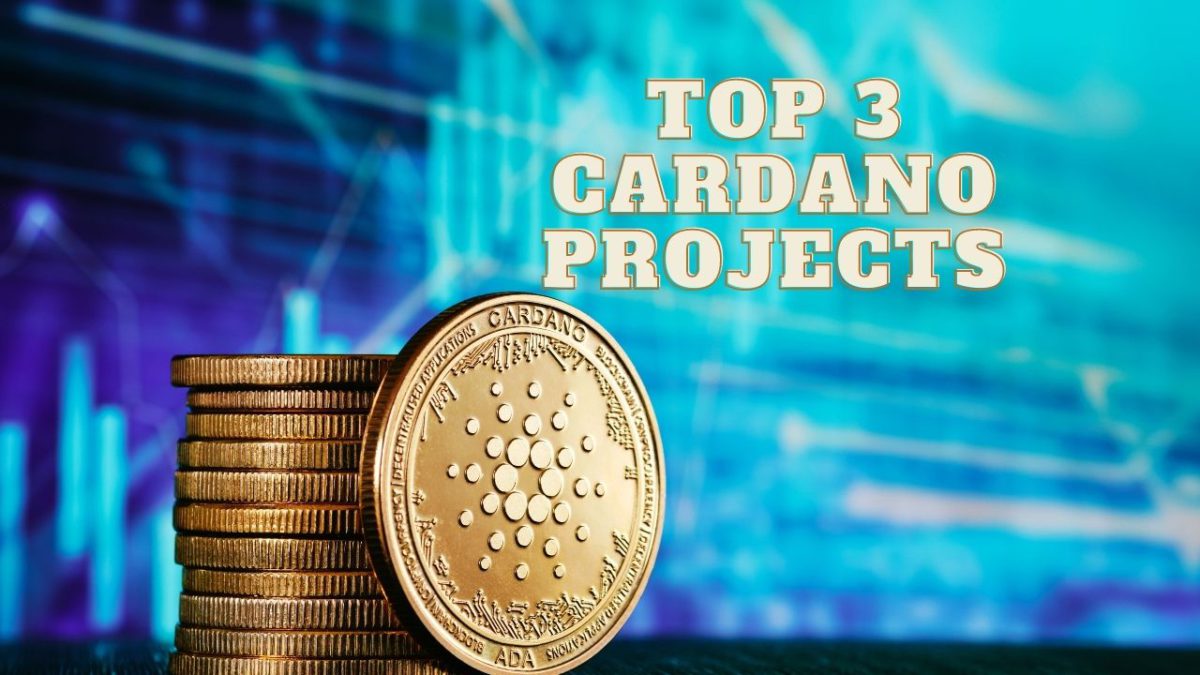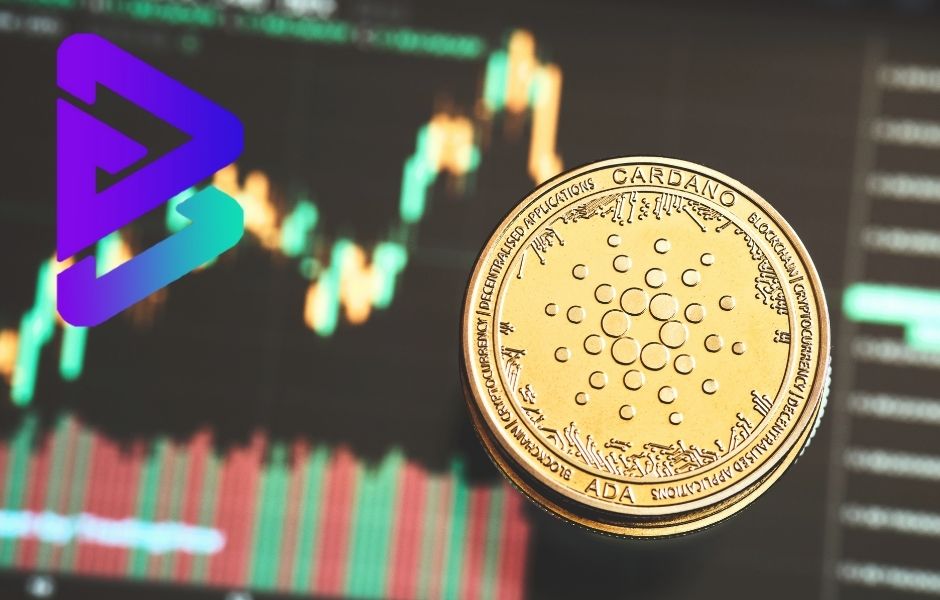Yield Farming and Staking: Unleashing The Intriguing Power of DeFi In 2024
The rise of blockchain technology has given birth to a revolutionary concept: Decentralized Finance (DeFi). In 2024, DeFi is rapidly transforming the financial landscape, offering new ways to earn returns on your cryptocurrency holdings. This article delves into two prominent DeFi strategies: yield farming and staking.
Disrupting the Status Quo: The Rise of DeFi
Traditional finance is often characterized by centralized institutions controlling access to financial services. DeFi disrupts this model by creating an open, peer-to-peer financial system built on blockchain technology. This empowers individuals to participate in a variety of financial activities without relying on intermediaries.
Democratizing Finance: Accessibility for All
- Open Doors: Unlike traditional financial institutions with stringent requirements, DeFi welcomes practically anyone with an internet connection and a DeFi wallet. This fosters financial inclusion for the underbanked or those without access to traditional financial services.
- Global Reach: DeFi transcends geographical boundaries. Anyone from anywhere in the world can participate in DeFi protocols, removing limitations imposed by traditional financial systems.
Transparency Under the Hood: Trust Through Openness
- Code as Law: DeFi protocols are built on open-source code, meaning the underlying code is freely available for anyone to inspect and audit. This transparency fosters trust and allows users to understand exactly how DeFi applications function.
- Community Driven: Many DeFi protocols are governed by Decentralized Autonomous Organizations (DAOs). These DAOs function through community proposals and voting, ensuring a level of control and transparency in the decision-making process.
A Breeding Ground for Innovation: Pushing the Boundaries
- Unleashing Creativity: DeFi fosters innovation by allowing developers to create new financial products and services not readily available in traditional finance. This includes novel lending and borrowing mechanisms, decentralized asset management solutions, and more.
- Composability is King: DeFi protocols are often designed with interoperability in mind. This “Lego-like” structure allows for the creation of even more complex and innovative financial products and services by combining different DeFi building blocks.
Beyond the Core Advantages: Additional Benefits to Consider
- Potential for Higher Returns: DeFi can offer users the potential to earn higher returns on their crypto holdings compared to traditional investment options. Strategies like yield farming and staking can generate attractive interest rates.
- Efficiency and Automation: DeFi transactions are often faster and more efficient compared to traditional financial systems. Smart contracts automate many processes, reducing the need for intermediaries and streamlining transactions.
- Censorship Resistance: DeFi operates on decentralized networks, making it resistant to censorship or control by any single entity. This empowers users to have more control over their financial activities.
It’s important to remember that DeFi also comes with its own set of risks, such as:
- Volatility: The cryptocurrency market is inherently volatile, and the value of your DeFi holdings can fluctuate significantly.
- Smart Contract Vulnerabilities: DeFi protocols rely on smart contracts, and vulnerabilities in these contracts can be exploited by hackers, leading to potential loss of funds.
- Rug Pull Scams: DeFi is a relatively new and evolving landscape, and there’s a risk of fraudulent projects designed to steal user funds.
By carefully considering both the advantages and risks, you can make informed decisions about whether DeFi is right for you and how to navigate this exciting new frontier in finance.
Also, read – How Does DeFi Yield Farming Works?
Unveiling the Potential: A Deep Dive into Yield Farming
Yield farming, a cornerstone strategy in Decentralized Finance (DeFi), empowers you to earn attractive returns on your cryptocurrency holdings. It leverages the power of liquidity pools to create a win-win scenario for both lenders and borrowers. Here’s a comprehensive breakdown of this dynamic DeFi concept:
The Engine of DeFi: Liquidity Pools
Imagine a giant pool of crypto assets, constantly churning with deposits and withdrawals. This, in essence, is a liquidity pool – a core DeFi mechanism that facilitates seamless token swaps and borrowing/lending activities. Users can deposit their crypto holdings into these pools, boosting the pool’s liquidity and earning rewards in return.
How Yield Farming Works: A Symbiotic Relationship
-
Depositing into the Pool: You contribute your crypto assets (liquidity) to a liquidity pool through your DeFi wallet. This increases the pool’s depth and allows for smoother transactions within the DeFi protocol.
-
Earning Rewards: For providing liquidity, you’ll receive rewards in the form of:
- Protocol tokens: These are the native tokens of the DeFi protocol you’re interacting with. They may hold value based on the protocol’s utility and future potential.
- Trading fees: A portion of the fees collected from token swaps within the DeFi protocol are distributed as rewards to liquidity providers.
-
Borrowing and Lending: The crypto assets deposited in the liquidity pool fuel DeFi’s lending and borrowing ecosystem. Users can borrow crypto from these pools, typically by putting up collateral (depositing another crypto asset).
The Allure of Yield Farming: High APYs
Yield farming often boasts enticing Annual Percentage Yields (APYs), significantly higher than traditional interest rates offered by banks. However, it’s crucial to understand that these APYs can be:
- Variable: DeFi markets are dynamic, and APYs can fluctuate significantly based on factors like liquidity levels and overall DeFi activity.
- Not guaranteed: Unlike traditional savings accounts, there’s no guarantee of returns in DeFi. The value of your deposited crypto assets can also fluctuate, potentially leading to impermanent loss (explained below).
Beyond the Basics: Risks and Considerations
While yield farming presents exciting opportunities, it’s not without risks. Here are some key considerations:
- Impermanent Loss: When you deposit your crypto assets into a liquidity pool, their value relative to each other can change. If you withdraw your assets at an inopportune moment, you might experience impermanent loss, where the value of your holdings in USD terms is lower than when you deposited them.
- Smart Contract Risks: DeFi protocols rely on smart contracts – self-executing code that governs pool operations. However, vulnerabilities in smart contracts can be exploited by hackers, potentially leading to loss of funds.
- Rug Pulls: In a rug pull scam, creators of a DeFi protocol abandon the project after collecting investors’ funds. Always research the DeFi protocol and its team before committing your crypto assets.
Cultivating Returns with Caution
Yield farming offers a compelling way to potentially earn significant returns on your crypto holdings. However, it’s vital to approach it with caution and a clear understanding of the associated risks. Here are some tips for navigating yield farming responsibly:
- Conduct thorough research: Before participating in any yield farm, research the DeFi protocol, its smart contracts, and the team behind it.
- Start small: Begin with a small investment to test the waters and gain experience before committing larger sums.
- Diversify your holdings: Don’t put all your eggs in one basket. Spread your crypto assets across different DeFi protocols and liquidity pools to mitigate risk.
- Stay informed: The DeFi landscape is constantly evolving. Keep yourself updated on market trends, potential risks, and best practices.
By following these guidelines and prioritizing security, you can explore the exciting world of yield farming and potentially cultivate bountiful returns on your crypto investments. Remember, DeFi empowers you to be your own banker, but it also demands a proactive approach to managing risks and making informed decisions.
Locking Up for the Future: Unveiling Staking in DeFi
While yield farming capitalizes on liquidity pools, staking offers another DeFi strategy for earning rewards on your cryptocurrency holdings. Here, you essentially become an investor in the security and smooth operation of a blockchain network. Let’s delve into the world of staking and explore how it empowers you to secure your assets while generating passive income.
The Pillars of Proof-of-Stake (PoS): A Shift from Mining
Unlike traditional Proof-of-Work (PoW) blockchains like Bitcoin, which rely on miners to validate transactions through intensive computing power, Proof-of-Stake (PoS) blockchains leverage a validator system. Validators are responsible for verifying transactions and adding new blocks to the blockchain.
Earning Rewards for Holding: How Staking Works
- Choosing a PoS Blockchain: There are numerous PoS blockchains available, each with its own staking requirements and rewards. Popular options include Ethereum (after the Merge), Cardano, and Solana.
- Staking Your Tokens: You’ll need to transfer your crypto holdings (specific to the chosen PoS blockchain) to a compatible DeFi wallet or staking platform.
- Supporting the Network: By staking your tokens, you essentially become a validator or delegate to a validator pool. You contribute to the security and smooth operation of the blockchain network.
- Earning Rewards: For your contribution to network validation, you’ll receive rewards in the form of new tokens issued by the blockchain protocol. The amount of rewards you earn is often proportional to the amount of tokens you stake.
Staking vs. Yield Farming: Key Differences
While both staking and yield farming enable you to earn rewards on your crypto holdings, there are some key distinctions:
- Mechanism: Staking involves directly supporting a blockchain network, while yield farming leverages liquidity pools within DeFi protocols.
- Risks: Staking generally carries lower risks compared to yield farming. Smart contract vulnerabilities and impermanent loss are less of a concern with staking.
- Accessibility: Staking requirements can vary depending on the chosen blockchain. Some have minimum staking amounts, while others allow participation through delegation pools. Yield farming can be more accessible with lower entry points.
Unveiling the Benefits of Staking
- Passive Income: Staking offers a way to earn rewards on your crypto holdings without actively trading them.
- Network Security: By participating in staking, you contribute to the decentralization and security of the blockchain network.
- Lower Energy Consumption: Compared to Proof-of-Work mining, staking is a more energy-efficient way to secure a blockchain network.
Considering Staking? Here’s What to Remember
- Research Different Blockchains: Each PoS blockchain has its own staking requirements, rewards structure, and potential risks. Choose a reputable blockchain with a strong track record.
- Security: Ensure you’re staking your tokens on a secure platform or wallet.
- Lockup Periods: Some blockchains impose lockup periods on staked tokens, meaning you’ll have restricted access to them for a certain duration.
Staking for a Secure Future
Staking presents a compelling strategy for earning rewards on your crypto holdings while contributing to the security and growth of a chosen blockchain network. By carefully considering the different staking options and prioritizing security, you can leverage this DeFi strategy to unlock the potential of your crypto assets. Remember, the DeFi landscape is constantly evolving, so stay informed and make well-researched decisions before venturing into staking or any other DeFi activity.
Conclusion:
Decentralized Finance (DeFi) has emerged as a powerful force in the financial landscape, and 2024 is shaping up to be a pivotal year for its evolution. Yield farming and staking are just the opening act in this dynamic play, offering glimpses of the immense potential DeFi holds for transforming financial services.
A Future Filled with Financial Innovation
As DeFi continues to mature, we can expect a crescendo of innovative financial products and services to emerge. Here are some exciting possibilities on the horizon:
- Fractional Ownership: DeFi could revolutionize asset ownership by enabling fractionalization of real-world assets like real estate or artwork. This would allow for increased accessibility and liquidity in traditionally illiquid markets.
- Decentralized Insurance: DeFi can foster the development of peer-to-peer insurance protocols, offering alternative risk management solutions without relying on traditional insurance companies.
- Decentralized Identity (DID): DeFi can play a role in establishing a new paradigm for digital identity. DID solutions empower users to control their personal data and securely interact with DeFi applications.
The Road Ahead: Navigating Challenges and Seizing Opportunities
Despite its immense potential, DeFi is still a young and evolving ecosystem. Here are some key challenges that need to be addressed to ensure its long-term success:
- Regulation: Regulators around the world are still grappling with how to effectively regulate DeFi without stifling innovation. Clear and well-defined regulations are crucial for building user trust and confidence in the DeFi ecosystem.
- Security: Smart contract vulnerabilities and hacks remain a major concern in DeFi. Continuous security audits and advancements in smart contract technology are essential for mitigating these risks.
- Scalability: Current DeFi protocols often struggle with scalability issues, leading to high transaction fees and slow processing times. Layer-2 scaling solutions and protocol upgrades are necessary to ensure DeFi can accommodate a wider user base.
The Power of Knowledge: Educating Yourself for Success
While DeFi presents a plethora of exciting opportunities, it’s vital to approach it with a healthy dose of caution and a strong foundation of knowledge. Here’s how to equip yourself for a successful DeFi journey:
- Conduct Thorough Research: Before interacting with any DeFi protocol, thoroughly research its functionalities, security audits, and the team behind it.
- Start Small and Gradually Scale Up: Begin with a small investment to familiarize yourself with DeFi platforms and strategies before committing larger sums.
- Stay Informed: The DeFi landscape is constantly evolving. Keep yourself updated on emerging trends, security risks, and best practices.
DeFi: A New Era for Financial Empowerment
DeFi presents a unique opportunity to break free from the confines of traditional finance and explore a more open, transparent, and user-centric financial system. By educating yourself, prioritizing security, and approaching DeFi with a cautious optimism, you can leverage its potential to unlock new avenues for financial empowerment and navigate the future of finance with confidence. Remember, DeFi is a symphony of innovation and caution, and by harmonizing these elements, you can make the most of the opportunities it presents.
Stay informed with daily updates from Blockchain Magazine on Google News. Click here to follow us and mark as favorite: [Blockchain Magazine on Google News].
Get Blockchain Insights In Inbox
Stay ahead of the curve with expert analysis and market updates.
latest from tech
Disclaimer: Any post shared by a third-party agency are sponsored and Blockchain Magazine has no views on any such posts. The views and opinions expressed in this post are those of the clients and do not necessarily reflect the official policy or position of Blockchain Magazine. The information provided in this post is for informational purposes only and should not be considered as financial, investment, or professional advice. Blockchain Magazine does not endorse or promote any specific products, services, or companies mentioned in this posts. Readers are encouraged to conduct their own research and consult with a qualified professional before making any financial decisions.

 Bitcoin
Bitcoin  Ethereum
Ethereum  Tether
Tether  XRP
XRP  Solana
Solana  Dogecoin
Dogecoin  USDC
USDC  Cardano
Cardano  Lido Staked Ether
Lido Staked Ether  TRON
TRON  Avalanche
Avalanche  Chainlink
Chainlink  Wrapped stETH
Wrapped stETH  Toncoin
Toncoin  Sui
Sui  Shiba Inu
Shiba Inu  Wrapped Bitcoin
Wrapped Bitcoin  Polkadot
Polkadot  Stellar
Stellar  Hyperliquid
Hyperliquid  Hedera
Hedera  WETH
WETH  Bitcoin Cash
Bitcoin Cash  LEO Token
LEO Token  Uniswap
Uniswap  Pepe
Pepe  Litecoin
Litecoin  Wrapped eETH
Wrapped eETH  NEAR Protocol
NEAR Protocol  Ethena USDe
Ethena USDe  Aptos
Aptos  Internet Computer
Internet Computer  USDS
USDS  Aave
Aave  Cronos
Cronos  POL (ex-MATIC)
POL (ex-MATIC)  Ethereum Classic
Ethereum Classic  Mantle
Mantle  Render
Render  MANTRA
MANTRA  Bittensor
Bittensor  Artificial Superintelligence Alliance
Artificial Superintelligence Alliance  WhiteBIT Coin
WhiteBIT Coin  Monero
Monero  Ethena
Ethena  Dai
Dai  Arbitrum
Arbitrum 



